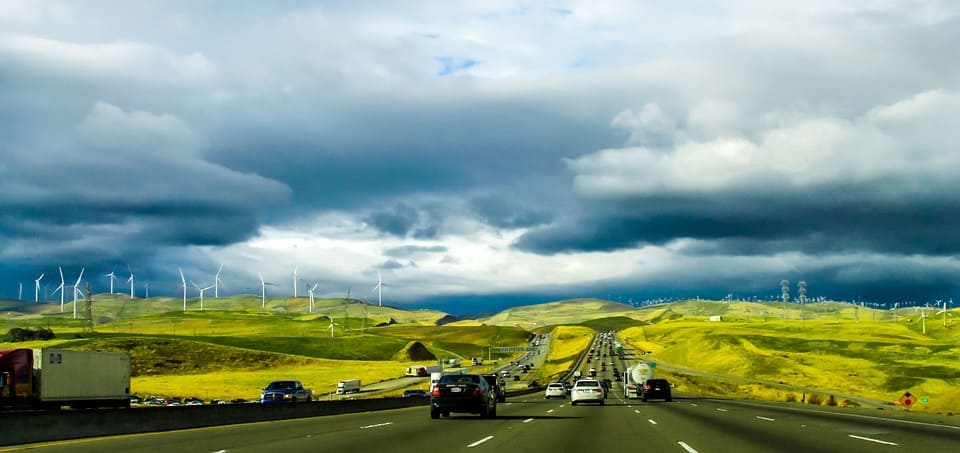
by Jim Roemer | May 24, 2017 | Climatelligence, Global Warming
Green bonds are relatively new and allow for conscientious investing The issuer needs capital to move forward. The holder receives interest and/or the principal. It is just like any other bond. However, they are tax-exempt bonds that fund environmentally sustainable projects. Green bond investments have grown more than tenfold from 2013, to an estimated $150 billion for 2017. With a B America!
Green Bonds for Energy Development
For me, the first type of project that comes to mind is renewable energy development, like solar panels and wind turbines. The state of Hawaii issued $150 million in green bonds in 2014 for such investment. However, there are many other projects, like pollution mitigation, energy efficient upgrades to infrastructure, and nature conservation initiatives.
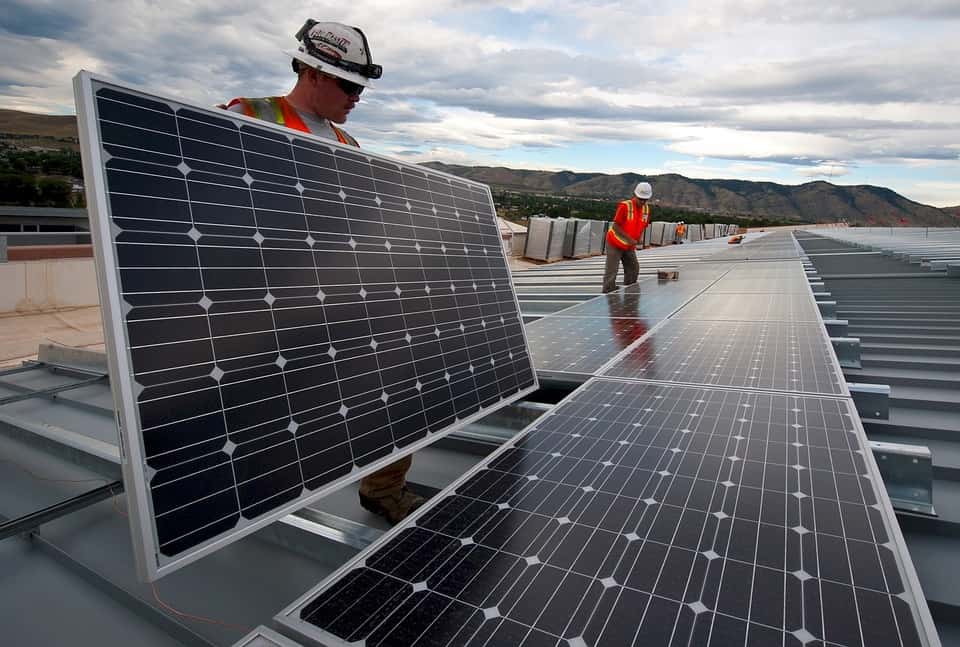
Climate Change Adaption
Investments that may unfortunately become more commonly required are climate change adaptation ventures. Sea level rise may require municipalities to issue bonds that fund flood prevention systems. The city of Miami, FL is currently spending $100 million to raise roads and redirect water on La Gorce Island. Other climate change adaption projects could involve the migration of farms to more suitable lands. We are in an age of increasing social responsibility and need for sustainability. Green bonds provide an excellent service to both the holder and the issuer.
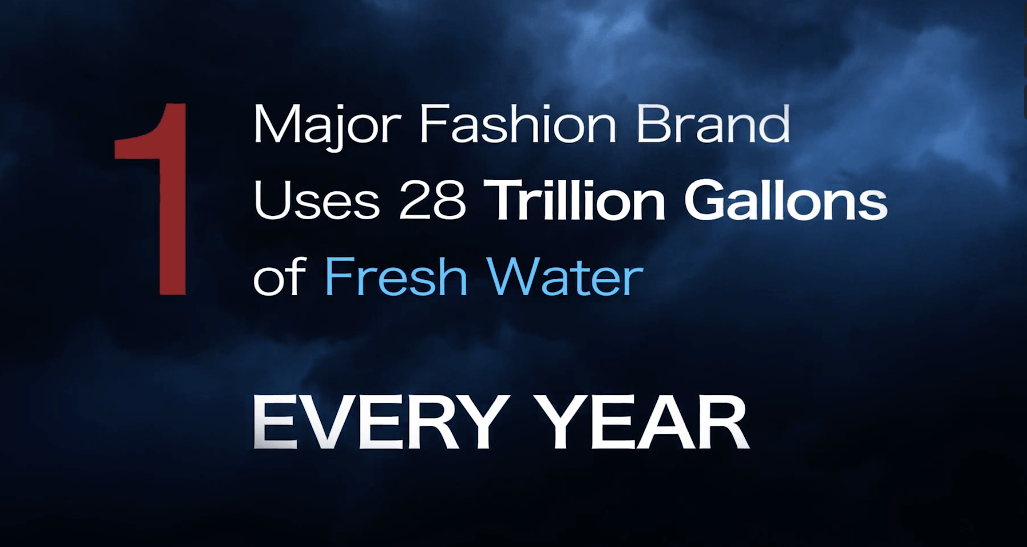
by Jim Roemer | Apr 3, 2017 | Climate, Climatelligence, Environment, Global Warming, Weather
I recently saw at the Sarasota Film Festival this movie. It was very powerful to me. Did you know some of the facts, below?
Following international river conservationist, Mark Angelo, RIVERBLUE spans the globe to infiltrate one of the world’s most pollutive industries, fashion. Narrated by clean water supporter Jason Priestley, this groundbreaking documentary examines the destruction of our rivers, its effect on humanity, and the solutions that inspire hope for a sustainable future.
Through harsh chemical manufacturing processes and the irresponsible disposal of toxic chemical waste, one of our favorite iconic products has destroyed rivers and impacted the lives of people who count on these waterways for their survival. RIVERBLUE brings awareness to the destruction of a some of the world’s most vital rivers through the manufacturing of our clothing, but will also act as a demand for significant change in the textile industry from the top fashion brands that can make a difference.
Jim Roemer
See the Trailer at the Bottom of the Page
CAN FASHION SAVE THE PLANET?
One of the first and most frequent questions that people ask us is, “Where can I buy clothes made in an ethical and eco-friendly way?” Fashionheroes.eco is our way to help answer that. Fashion Heroes has been started to offer a place for people to speak up about sustainable fashion, to learn more about brands that are taking steps in the right direction and to see how we can all participate to make wise choices in fashion, for the better of all people and the environment!
To find out more about some great brands and companies taking steps in the right direction, visit us at www.fashionheroes.eco
It’s time for us to demand that the clothes we wear are made in an ethical and environmentally sustainable way. Why start with denim? Because we all have and love our jeans, so let’s be the next, cleaner, Jeaneration!
* Over 1.2 billion jeans are produced annually worldwide.
* Approximately 450 million pairs of jeans are sold in the US per year, with over 70% of denim fabric production China, Indonesia and other Asian markets.
* According to Levis, 1 pair of 501 jeans takes 920 gallons of water to make. That’s a lot of water!
So why jeans? Because by focusing on one item we can make a difference.
What we buy does affect the lives of the people making them and just as we wouldn’t want our children to drink the toxic waste from jeans manufacturing, we can’t accept that for the children of those who are making what we buy. And let’s face it, the water from those rivers goes into the ocean and winds up in our water sources too.
There is hope! There are great companies out there who have designed several methodologies of jeans processing, some using laser and some using nano-technology, that is much less harmful to rivers and the people who use them. We will keep you posted with this information through our blog!
See the trailer of the movie, Below
Trailers

by Jim Roemer | Mar 29, 2017 | Climate, Climatech, Climatelligence, Forecast, Global Warming, Weather
The floods in Peru will continue in a series of historical events. Most global commodity regions around the world have escaped the severe weather. If rains were to move further south into the Chilean Copper Mines (desert region), this would be significant for copper prices. Right now, it is not an issue, however.
The situation in Peru is destroying thousands of years of their rich heritage. Click to the left (blue)
Our unique, long range forecast program CLIMATECH, predicted this flooding as early as last January. Below, you will see the global rainfall forecast from early January. More heavy rains are on the way. The forecast it made 2 months ago, used the warm Atlantic (AMO) and warming at Nino 1+2 off the coast of Peru, as El Nino conditions are slowly evolving.
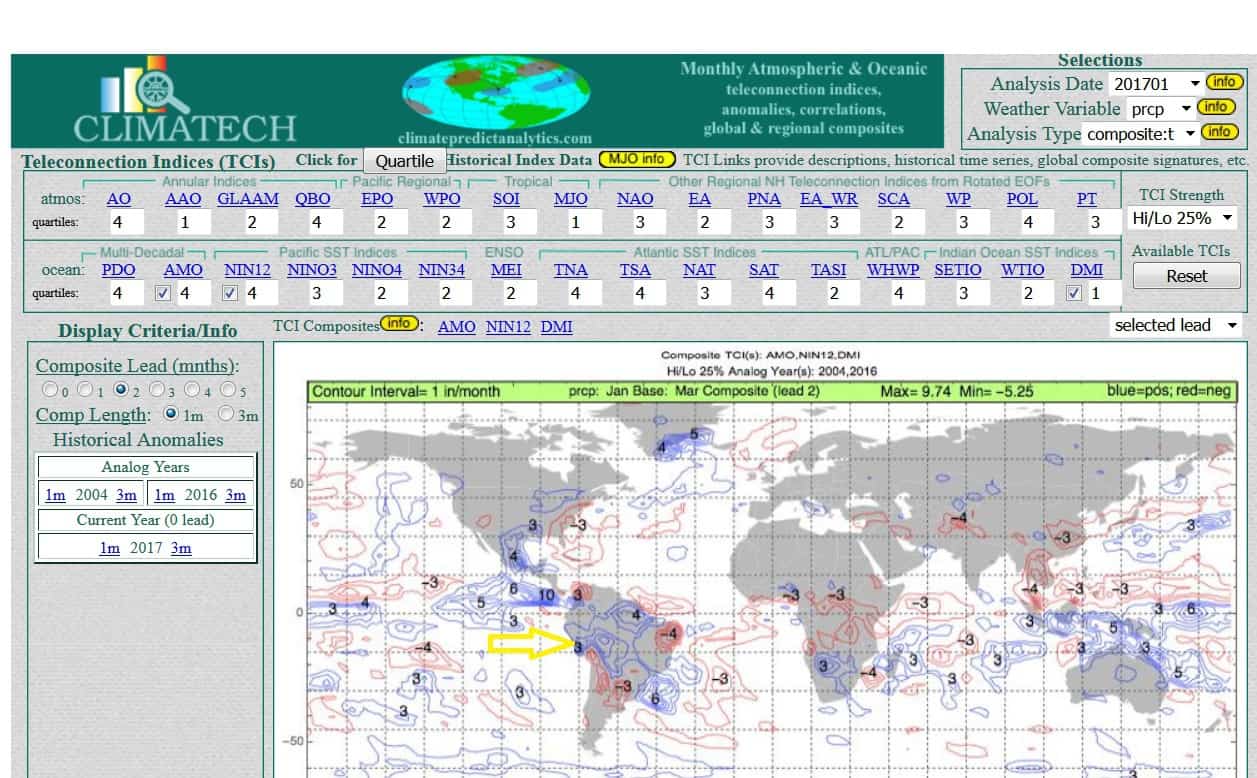
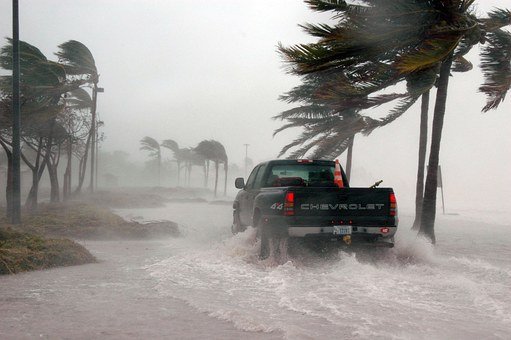
by Jim Roemer | Mar 22, 2017 | Climatelligence, Commodities, Global Warming, Weather
The latest report by the World Meteorological Organization (WMO) paints a disquieting picture of the state of global climate. The WMO releases a report each year, summarizing the weather that occured. The earth had rising sea levels and its warmest year yet, just edging out 2015. November saw the lowest global sea ice ever recorded. Carbon Dioxide concentrations pushed past the 400 ppm threshold in late 2015. As a result, these unprecedented observations are continuing to highlight the anthropogenic impacts on our climate system.
“We are now in truly uncharted territory.” David Carlson, director of the World Climate Research Program
Commodities affected
“Recently, we’ve experienced a warm winter in the U.S., flooding in California, freezes for European vegetables and record heat in Australia. The extreme weather has not impacted most agriculture commodities. However, this may change come the summer.” -Jim Roemer
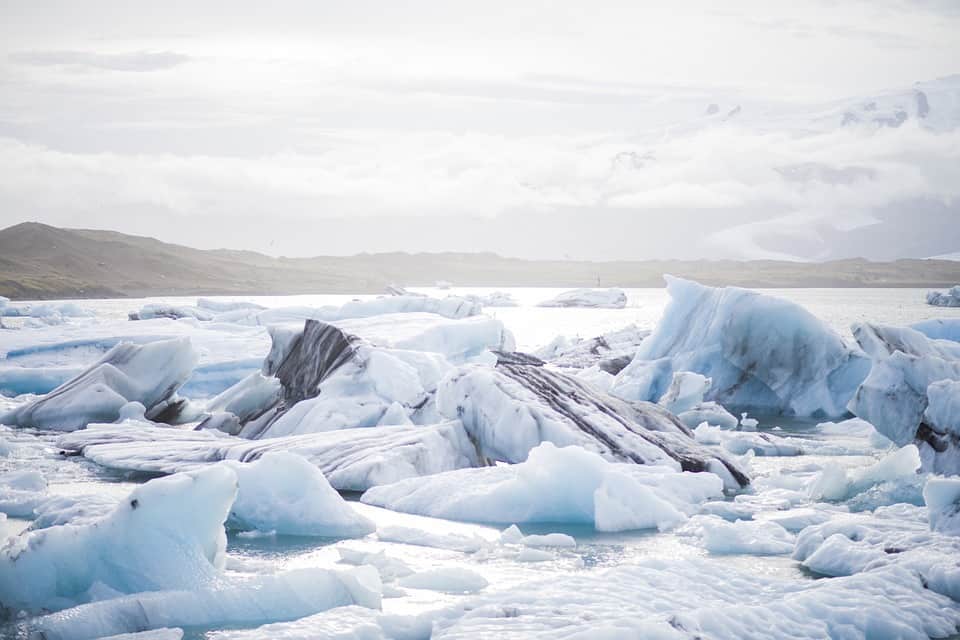
by Jim Roemer | Mar 13, 2017 | Climatelligence, Global Warming
Unprecedented heat in Antarctica
A new record high temperature for the Antarctica continent was observed on March 25th 2015. At the Argentine Research Base Esperanza, temperatures climbed to 63.5 degrees Fahrenheit. This station is located on the Antartica Peninsula, just south of South America. The World Meteorological Organization made the announcement last Wednesday, after a lengthy verification process. Their announcement comes on the heels of more recent climate change news in the South Pole.
Station successfully relocated, now closing for the winter
The British Antarctic Survey’s Halley VI station will close for the Winter, after just recently being moved 14 miles across the frozen shelf. The 13 week trek was necessary, as Chasm 1 had crept towards the previous location, as close as 6 km. In the new location, the “Halloween Crack” on the Brunt Ice Shelf is also threatening the station. The progression of this new crack caused the director to close the station of the southern hemispheric winter. The station will be closed for the first time since it opened in 2012. This is a good example of how Climate Change can impact day to day operations.
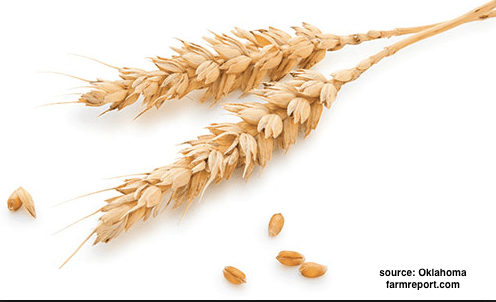
by Jim Roemer | Feb 16, 2017 | Commodities, Global Warming
Two years ago this month, in a well-publicized and much lampooned political stunt, Sen. James Inhofe (R-OK) brought a snowball to the Senate floor to highlight the “unseasonable” cold and cast doubt on climate change. The Republican lawmaker would have been hard-pressed to find a snowball anywhere in his home state this past weekend. Oklahoma just endured a spell of exceptionally warm weather. Mangum, Oklahoma saw temperatures close to 100º F, setting a state record. The average February high in Mangum is 56º F.

Many people may welcome a temperate day in February, but warm weather in normally cold months disrupts ecosystems. Trees may bloom after an unseasonably balmy spell — and then suffer frost damage when cold weather returns. Flowers may blossom and shed their petals before bees arrive to pollinate them. These minor destabilizations have a ripple effect, impacting flora, fauna, and the industries built around them. In Oklahoma, the spike in temperature is particularly ironic, given the state’s political climate. Inhofe is Washington’s most vocal climate denier, having published a book alleging that climate change is a hoax while serving as the ranking Republican member of the Senate Environment Committee. Inhofe will soon have an ally inside the EPA — Oklahoma Attorney General Scott Pruitt, President Trump’s pick to head the agency. Inhofe has described Pruitt, a longtime fossil fuel insider, as a “leader and a partner on environmental issues for many years.” Pruitt is expected to bring several former Inhofe staffers with him to his new office. As Oklahoma’s attorney general, Pruitt has sued the EPA many times, including over the Obama administration’s plan to limit carbon pollution from power plants. The Clean Power Plan is considered one of the most effective tools for curbing U.S. carbon emissions.
(excerpts from a recent article from Climateprogress.com)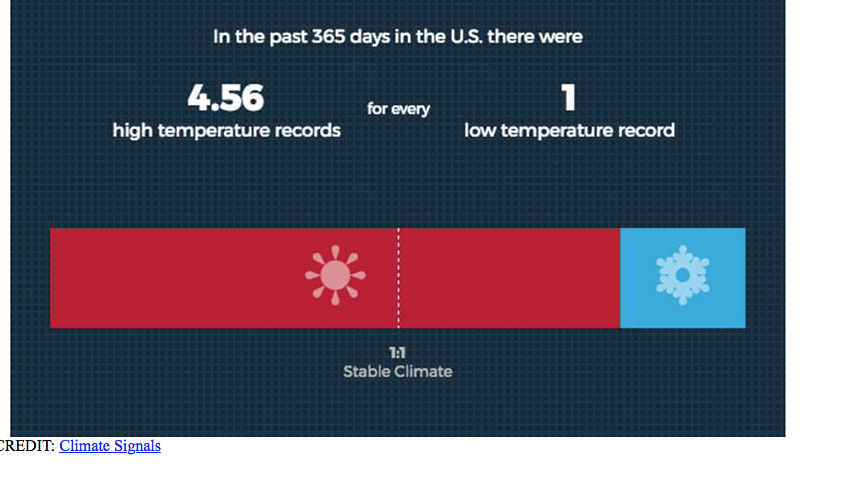
WHEAT COMING OUT OF DORMANCY A MONTH EARLY WILL BE WATCHED BY TRADERS FOR ANY SPRING PROBLEMS–BUT A POSSIBLE WEAK EL NINO FOR SUMMER “USUALLY” BODES WELL FOR THE WHEAT CROP
The map at the top of the page shows the distribution of wheat classes grown in the U.S. These 1998 maps are the latest available for planted area by class of wheat.
The wheat market has been rallying as of late due to the demand side of the equation finally picking up, after several years of a longer term bear market due to a glut of supplies. Hedge funds are beginning to think that many grains are at “fair value”. Also, while not readily discussed, earlier dryness in Europe this winter and only fair conditions of the Texas and Oklahoma wheat crop, and the recent warm weather, is probably causing some psychological concerns about the U.S. crop. We are still about 2 months away before U.S and European/Russian weather will have more of an impact on yields and the wheat market. Any cold snap in April or early May will be important given that record warm Plains weather and the crop coming out of dormancy, early. However, historically given the big snows and rains out west and no chance for a spring/summer La Nina, the odds of the U.S. having major, bullish related spring problems to the wheat crop is probably unlikely. With the world awash in wheat, it will take crop issues in more than just one region of the world.
• The United States is a major wheat-producing country, with output typically exceeded only by China, the European Union, and India.
• Wheat ranks third among U.S. field crops in both planted acreage and gross farm receipts, behind corn and soybeans.
• U.S. wheat harvested area has dropped off nearly 30 million acres, or nearly one-third, from its peak in 1981 stemming in large part from foreign competition and because of declining returns compared with other crops and changes in government programs.
• About half of the U.S. wheat crop is exported.
• Despite rising global wheat trade, the U.S. share of the world wheat market has eroded in the past two decades.













